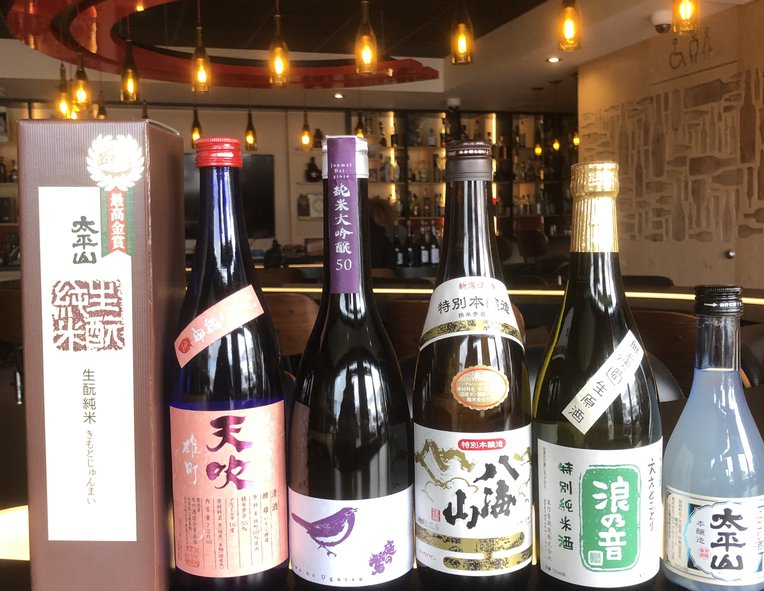AN INTRO TO SAKE:
Hello! Welcome to the very first edition of Sake Stuffs, a regular look at Sherbrooke’s ever-growing selection of sake. For this inaugural edition, I’d like to highlight some of the very basics of this intriguing, delicious, and often misunderstood beverage so that we can better appreciate all that sake has to offer.
First off, what exactly is sake? In my experience, many try to fit sake into an already existing category whether it be wine, vodka, beer, or what-have-you. In reality, one can argue that sake most closely resembles beer, at least in terms of methods of production. Whereas most beer is made of the same 4 ingredients (water, hops, grains (usually barley), and yeast), sake is made with water, koji mold, rice (a grain!), yeast, and lactic acid. If I were to oversimplify things even further and bypass all the technicalities, I would also say that the general brewing process is similar between beer and sake as well. Of course, the unique qualities of sake (it’s colour, aroma, flavour, etc.) make it a category all its own.
Next, if you were to peruse the sake in our cooler, you may notice that there are several types/styles/grades of sake. Indeed, I could delve into what each separate style and grade means, but I’d rather save that for future Sake Stuffs editions and not overload you with too much info right off the bat. Generally speaking though, sake is separated into different grades with the main difference between grades being the percentage of rice that is milled down before brewing (higher grade sakes have the rice milled down to a lower percentage). For example, sake with rice milled down to 50% will be a higher grade than a sake that is just milled down to 70%. This may be confusing at first, but it’ll become clear as we look at specific examples, I promise! I should also note that just because sake is of a higher grade, it does not mean that it is an inherently “better” sake. Instead, it is beneficial to approach each grade of sake as stylistically different with its own unique qualities (much like a Stout is not “better” than a Lager. It’s just different!).
It is also important to know that most of the sake currently on our shelf is of a premium grade referred to as ginjo (or dai ginjo which is even more "premium") and is often preceded by the word junmai. When you see the word junmai, that simply means that distilled alcohol was not added to the sake. There are some styles of sake including Honjozo which add distilled alcohol to enhance fragrance and flavour, but again, you will not see “junmai” anywhere on the label. Overall , if you see the word “ginjo” on the bottle, you’ll know that it’s premium and delicious and you should totally buy it!
BAM! You are an official Sake Expert now right? WRONG. We’ve barely scratched the surface of the delightful complexities that sake brings to the table, but never fear, we will learn more as we take a closer look at specific brands and products. Be on the lookout for a new Sake Stuffs soon that will go more in-depth on specific sake in our cooler. Until next time!
–Stephen Bezan
[Stephen is the purchaser of all things cold in the Sherbrooke cooler (beer/sake/cider/Rockstars). He also has an irresponsible obsession with potato chips].



